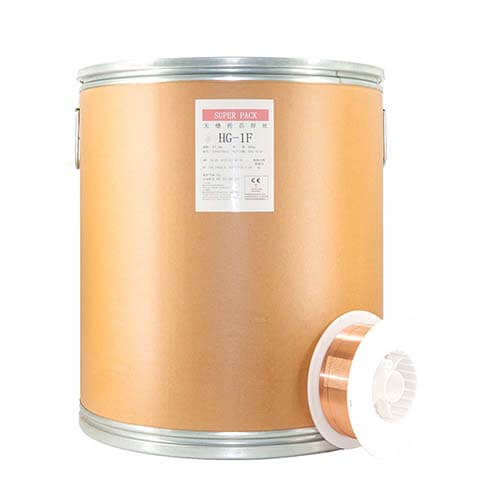What is AWS A5.20 E71T 1C welding wire?
AWS A5.20 E71T-1C is a type of flux-cored welding wire used for welding carbon steel. It is classified as an all-position welding wire, meaning it can be used for welding in any position, including overhead. The “E” in the name stands for electrode or filler metal, while “71” indicates a tensile strength of 71,000 psi. The “T” signifies that it is a tubular electrode, and the “1” indicates that it is an all-position welding wire. The “C” at the end of the classification designates that it has a Charpy V-notch impact toughness requirement at -30°C.
This type of welding wire is designed to be used with CO2 shielding gas, which provides good penetration and a stable arc. It is commonly used in industries such as shipbuilding, offshore oil and gas, and structural steel fabrication. AWS A5.20 E71T-1C welding wire provides excellent weld bead appearance, easy slag removal, and low spatter levels. It has a high deposition rate, which makes it ideal for welding thicker sections of metal.
As with any welding process, it is important to follow the manufacturer’s instructions and recommended welding parameters when using AWS A5.20 E71T-1C welding wire to ensure a high-quality and strong weld.

What is AWS A5.20 E71T 1M welding wire?
AWS A5.20 E71T-1M is a type of welding wire that is used in flux-cored arc welding (FCAW) processes. This welding wire is designed for welding mild and low-alloy steel, such as structural steel, sheet metal, and heavy equipment.
The “E71T-1M” designation indicates the wire’s characteristics, including its tensile strength, welding position, and shielding gas requirements. The “E” stands for electrode, the “71” indicates a minimum tensile strength of 71 ksi, and the “T” refers to the wire’s tubular shape. The “1” indicates that it can be used in all positions, and the “M” means that it is suitable for welding with a mixture of argon and CO2 gases.
This welding wire is often used in construction, shipbuilding, and other heavy fabrication applications. It offers excellent weldability, good mechanical properties, and high deposition rates, making it a popular choice among welders. Additionally, AWS A5.20 E71T-1M welding wire has a low spatter and a smooth arc, which helps to produce high-quality welds.
Different between AWS A5.20 E71T 1C welding wire and AWS A5.20 E71T 1M welding wire
The main difference between AWS A5.20 E71T-1C and AWS A5.20 E71T-1M welding wire is the classification and intended use.
AWS A5.20 E71T-1C welding wire is designed for welding carbon steel and is classified as an all-position welding wire. The “C” designation at the end of the classification means that it has a Charpy V-notch impact toughness requirement at -30°C.
On the other hand, AWS A5.20 E71T-1M welding wire is specifically designed for welding mild steel and low alloy steels. The “M” designation in the classification means that it has a lower diffusible hydrogen content than the “C” classification. This makes it ideal for applications where hydrogen-induced cracking is a concern.
Both types of welding wire are classified as flux-cored, meaning they have a hollow core filled with flux. The flux provides shielding from the atmosphere and produces a slag that covers the weld, protecting it from contamination.
It is important to note that both types of welding wire should be used in accordance with the manufacturer’s instructions and recommended welding parameters to ensure a high-quality and strong weld.

